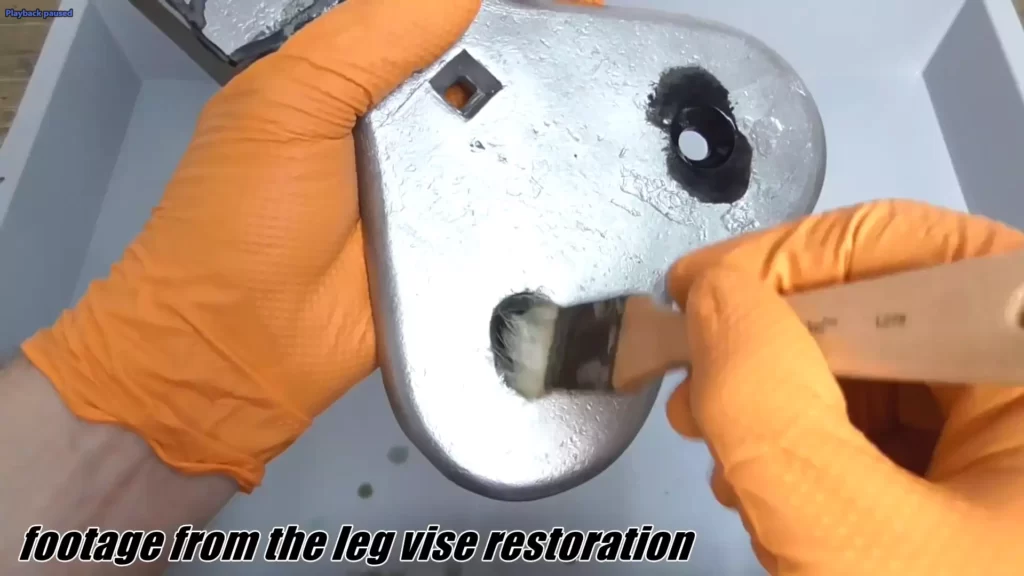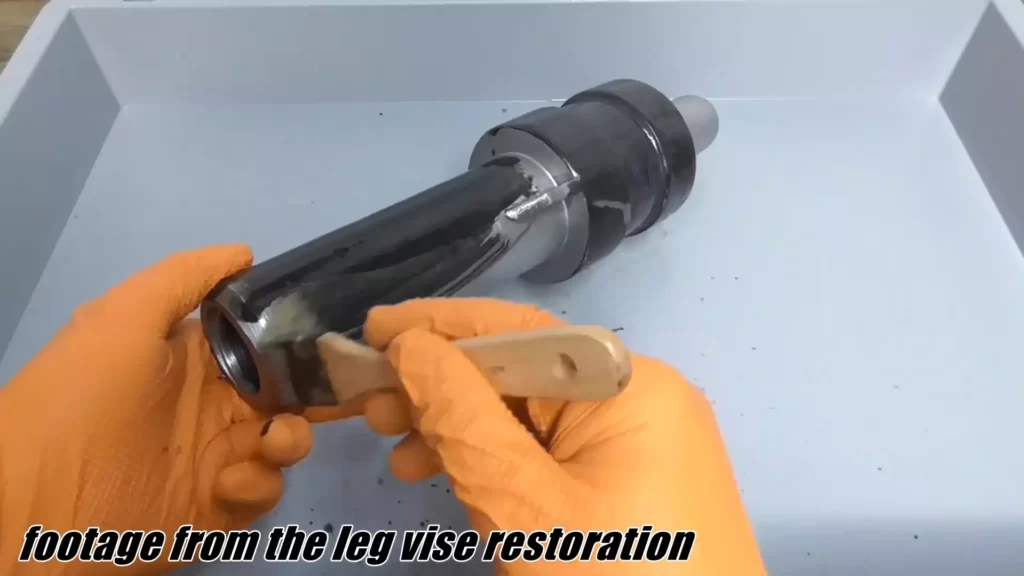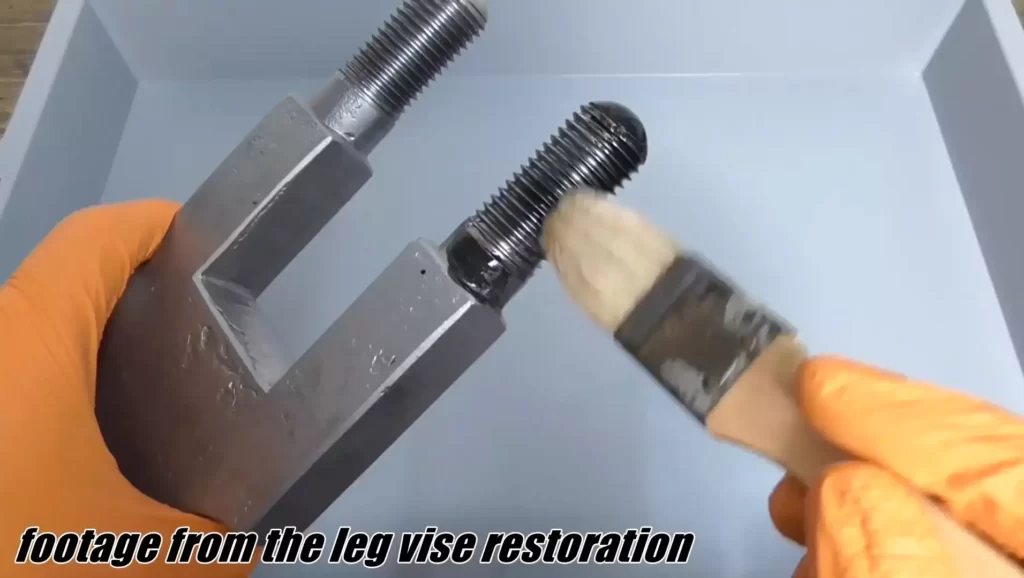Stainless steel is a popular material for various applications due to its strength, corrosion resistance, and attractive appearance.
However, some applications may require a darker color or finish for aesthetic or functional reasons. While stainless steel is not easily tarnished or oxidized, it is possible to darken it through various methods.
In this article, we will explore different ways to darken stainless steel, ranging from chemical and physical methods to DIY techniques that you can easily try at home.
We will also discuss the pros and cons of each method, as well as the safety precautions that you should take when handling chemicals or heat.
Let’s dive in.
Why darken stainless steel?
There are several reasons why you may want to darken stainless steel, such as:
Aesthetic appeal: Darkening stainless steel can give it a more elegant or rustic look, depending on the method used.
Camouflage: If you want to blend stainless steel with other materials or backgrounds, darkening it can help to conceal it.
Light absorption: If stainless steel reflects too much light, it may cause glare or discomfort, especially in outdoor or bright settings. Darkening can reduce the reflectivity and absorb more light.
Corrosion resistance: Some darkening methods involve coating or passivating the stainless steel, which can enhance its resistance to rust and other forms of corrosion.
How to Darken Stainless Steel?
If you want to add a bit of darkness to your stainless steel, there are a few ways to do it. We will discuss 3 different methods to darken stainless steel.
1. Chemical methods to darken stainless steel
2. Physical methods to darken stainless steel
3. DIY methods to darken stainless steel
Chemical methods to darken stainless steel
Chemical methods involve using various substances to alter the surface of stainless steel and produce a darker color or finish. Here are some of the most common chemical methods for darkening stainless steel:
1. Black oxide coating
Black oxide is a conversion coating that forms a thin layer of black iron oxide on the surface of stainless steel. This layer is porous and absorbs some light, which gives the stainless steel a black or dark gray appearance.
Black oxide is often used for decorative or corrosion-resistant purposes, as it also seals the surface and improves the adhesion of lubricants or paints.
How to darken using Black oxide coating:
To blacken stainless steel with black oxide, you need to prepare a solution of sodium hydroxide (caustic soda) and sodium nitrate (saltpeter) in water, and heat it to about 290-310°C (554-590°F) in a stainless steel tank.
Then, you need to immerse the stainless steel parts in the solution for about 10-20 minutes, rinse them with water, and apply a rust inhibitor or oil to the surface. The black oxide coating should be uniform and durable, but it may not be as dark or consistent as other methods.
2. Blackening with sulfuric acid
Sulfuric acid can also be used to darken stainless steel, by etching the surface and forming a black iron sulfate layer. This layer is similar to black oxide, but may be more porous and less durable, as it does not seal the surface.
Sulfuric acid is a strong and corrosive chemical, so you must handle it carefully and use protective gear, such as gloves, goggles, and a respirator.
How to darken with sulfuric acid: To blacken stainless steel with sulfuric acid, you need to prepare a solution of sulfuric acid and water, with a ratio of about 1:10 or 1:20, depending on the desired strength.
Then, you need to immerse the stainless steel parts in the solution for a few minutes, until the desired color is achieved, and rinse them thoroughly with water.
You can also neutralize the acid with a solution of baking soda and water, and then rinse the parts again with water and dry them. The blackened stainless steel may need a rust inhibitor or oil to prevent further corrosion.
3. Blackening with nitric acid
Nitric acid can also be used to darken stainless steel, by reacting with the chromium on the surface and forming a black chromium oxide layer.
This layer is more stable and less porous than black oxide or black iron sulfate, but may require more careful handling and ventilation, as nitric acid is highly corrosive and toxic.

How to darken with nitric acid: To blacken stainless steel with nitric acid, you need to prepare a solution of nitric acid and water, with a ratio of about 1:3 or 1:4, and heat it to about 60-70°C (140-158°F) in a stainless steel container.
Then, you need to immerse the stainless steel parts in the solution for a few minutes, until the desired color is achieved, and rinse them thoroughly with water.
You can also neutralize the acid with a solution of baking soda and water, and then rinse the parts again with water and dry them. The blackened stainless steel may need a rust inhibitor or oil to prevent further corrosion.
4. Blackening with copper sulfate
Copper sulfate can also be used to darken stainless steel, by electrochemical deposition of a thin layer of copper on the surface. This layer is then oxidized to form a black copper oxide layer, which gives the stainless steel a dark brown or black appearance.
Copper sulfate is a less hazardous and more affordable chemical than sulfuric acid or nitric acid, but may require more preparation and equipment, such as a power supply, electrodes, and a copper anode.

How to darken with copper sulfate: To blacken stainless steel with copper sulfate, you need to prepare a solution of copper sulfate and water, with a ratio of about 1:10 or 1:20, and heat it to about 40-60°C (104-140°F) in a stainless steel container.
Then, you need to immerse the stainless steel parts in the solution, with a copper cathode and a stainless steel anode, and apply a low voltage and current for a few minutes, until the desired color is achieved.
You can also neutralize the solution with baking soda and water, and rinse the parts with water and dry them. The blackened stainless steel may need a rust inhibitor or oil to prevent further corrosion.
5. Blackening with gun bluing
Gun bluing is a traditional method for darkening metal surfaces, especially firearms, using iron salts and other chemicals. Gun bluing can also be used for stainless steel, but may require a more specialized formula and application, as stainless steel has a different composition than other metals.
Gun bluing can be applied by immersion, spraying, or wiping, and can produce a range of colors, from dark blue to black, depending on the method and the surface preparation.

How to darken with gun bluing: To blacken stainless steel with gun bluing, you need to prepare a solution of gun bluing chemicals, such as potassium nitrate, sodium hydroxide, and water, and heat it to about 140-160°C (284-320°F) in a stainless steel container.
Then, you need to immerse the stainless steel parts in the solution for a few minutes, until the desired color is achieved, and rinse them thoroughly with water.
You can also neutralize the solution with a solution of baking soda and water, and rinse the parts again with water and dry them. The blackened stainless steel may need a rust inhibitor or oil to prevent further corrosion.
Physical Methods to Darkening Stainless Steel
Apart from the chemical methods, there are also some physical methods that can be used to darken stainless steel. These methods include:
Heat treatment
By subjecting the stainless steel to high temperatures, the metal can develop a layer of black oxide that can be polished to a high gloss finish.
Electropolishing
By using an electric current and an electrolyte solution, the surface of the stainless steel can be etched and darkened, producing a smooth and uniform surface.
Chemical Guys Random Orbital Polisher
- EVERYTHING YOU NEED IN ONE KIT - The TORQX Kit features everything you need to polish paint, remove swirls and scratches, clean and restore clarity to headlights, and more!.Fit Type: Universal Fit
- DEVELOPED FOR PROFESSIONALS & ENTHUSIASTS - The TORQX is the dual action polisher of choice for any beginner, hardcore enthusiast, or professional detailer looking for one simple, lightweight, and powerful machine that can do it all.
- POWERFUL -The powerful 700 watt motor, 8mm dual action orbital throw, and compact design deliver powerful and consistent polishing, paint correction, and cleaning results with minimal fatigue and wear on the user.
DIY Methods to Darken Metal
If you don’t have access to professional blackening chemicals or equipment, there are some DIY methods that you can use to darken stainless steel at home.
However, these methods may not produce a durable or uniform finish, and may have some limitations in terms of color and texture. Some of the common DIY methods for blackening stainless steel include:
Baking soda and water solution
By applying a paste of baking soda and water to the surface of the stainless steel and letting it dry, the metal can develop a dark oxide layer that can be polished to a smooth or textured finish.
Steel wool and vinegar solution
By rubbing a steel wool pad on the surface of the stainless steel and then soaking it in a mixture of vinegar and water, the metal can develop a dark and rough surface that can be sealed with oil or wax.
Vinegar and salt solution
By soaking the stainless steel in a mixture of vinegar and salt, the metal can develop a dark patina over time, which can be buffed to a matte or glossy finish.
Lucy's Family Owned White Vinegar
How to Blackening Stainless Steel with Vinegar
If your stainless steel appliances look a little lackluster, you can easily darken them with a few simple ingredients. All you need is some vinegar, water, and steel wool. Follow the process till the end.
- For blackening stainless steel with vinegar, mix it in water in a bowl with equal parts.
- Then, take a piece of steel wool and dip it into the mixture.
- Rub the wet steel wool all over the surface of your appliance in a circular motion. You should start to see the stainless steel darken immediately.
- Continue rubbing until you achieve the desired darkness.
- If you want to speed up the process, you can use more vinegar or less water in your mixture.
It is important to be sure to test it on a small area first to see how it will react with your specific type of stainless steel. This will save your time.
How To Darken Stainless Steel With Paint?
Sometimes, the desired look you need can be achieved by applying paint. The process is quite simple.
- First, clean the stainless steel surface with a mild detergent to remove any dirt or grime.
- Next, use sandpaper to roughen up the surface of the stainless steel. This will help the paint adhere better.
- Once the surface is sanded, apply a primer specifically designed for use on stainless steel.
- Allow the primer to dry completely before proceeding.
- Now you can begin painting your stainless steel with a dark-colored paint of your choice.
- Apply several coats until you are happy with the coverage and darkness level.
- Be sure to allow each coat to dry completely before applying the next one.
Rust-Oleum Universal Metallic Spray Paint
- Works on virtually any surface including wood, plastic, metal, fiberglass, concrete, wicker, vinyl and more
- Oil-based formula with excellent adhesion prevents rust, resists fading and chipping for a long lasting finish
- Fast drying formula dries to the touch in 30 minutes and covers up to 15 sq ft per can
- Prevents rust and corrosion for enhanced durability
- Provides an attractive, rich, shimmering metallic look on surfaces
Tips for Blackening Stainless Steel Safely and Effectively
- Always wear protective gear, such as gloves, goggles, and a respirator, when handling blackening chemicals or using physical methods.
- Clean and degrease the stainless steel parts thoroughly before blackening, to ensure a good adhesion and a uniform finish.
- Test the blackening process on a small and inconspicuous area first, to determine the color and the duration of the process.
- Use the appropriate method and chemicals for the type of stainless steel and the desired color and finish.
- Monitor the blackening process closely, and remove the parts from the solution or the heat source promptly when the desired color is achieved.
- Rinse the parts thoroughly with water after blackening, and neutralize the chemicals or dispose of them properly.
- Apply a rust inhibitor, such as oil or wax, to the blackened stainless steel, to protect it from corrosion and enhance its appearance.
- Store the blackening chemicals and equipment safely and securely, and dispose of them according to the local regulations.
Stainless Steel Coloring Techniques
How to Blacken Stainless Steel With Oil?
If you’re looking for a way to blacken stainless steel, using motor oil is a great option. By following a few simple steps, you can create a beautiful, deep black finish that will add an elegant touch to any project.
Here’s what you need to do:
- Clean and dry the stainless steel appliances. Any dirt or fingerprints will show through the finished product, so it’s important to start with a clean surface.
- Apply a generous amount of oil to the steel, using either your fingers or a microfiber cloth. Be sure to cover the entire surface evenly.
- Allow the oil to sit on the steel for at least 15 minutes, or longer when you want a darker finish.
- Use a clean cloth to wipe away any excess oil and then buff the surface until it shines. You may need to repeat this step several times to achieve the level of darkness you desire.
- Once you’re happy with the results, seal the blackened metal by spraying it with clear lacquer or applying automotive wax.

FAQs
Q1. Is blackened stainless steel as durable as regular stainless steel?
Ans: Blackened stainless steel may be less durable than regular stainless steel, as the blackening process can alter the surface properties and increase the risk of corrosion or wear.
However, with proper preparation, blackening, and maintenance, blackened stainless steel can still have a good level of durability and resistance.
Q2. Can I blacken stainless steel with household chemicals, such as vinegar or bleach?
Ans: It is not recommended to use household chemicals, such as vinegar or bleach, to blacken stainless steel, as they are not effective or safe for this purpose. Using inappropriate chemicals can damage the stainless steel, cause health hazards, or produce undesirable results.

Q3. Can I remove the blackened finish from stainless steel?
Ans: Yes, you can remove the blackened finish from stainless steel by using abrasive methods, such as sandblasting, grinding, or polishing, or by using chemical methods, such as acid stripping or electrolysis.
However, removing the blackened finish may also remove some of the underlying metal and affect the integrity and appearance of the stainless steel.
Q4. How can I prevent blackened stainless steel from rusting?
Ans: You can prevent blackened stainless steel from rusting by applying a rust inhibitor, such as oil, wax, or lacquer, to the surface, and by avoiding exposure to moisture or corrosive environments.
You should also clean and maintain the blackened stainless steel regularly, and inspect it for any signs of corrosion or damage. If you notice any areas of rust or corrosion, remove them immediately using a soft-bristled brush and a solution of water and mild detergent.
It is also important to avoid using abrasive cleaners or tools that could scratch or damage the surface of the stainless steel.
Q5. Is it safe to use vinegar and salt solution to darken stainless steel?
Ans: While vinegar and salt solution can produce a dark patina on stainless steel, it may not be safe or effective for all types of stainless steel or all applications.
Q6. Can You Darken a Stainless Steel Sink?
Ans: Yes. There are a few ways that you can darken a stainless steel sink. One way is to use a chemical treatment. This will involve using a chemical agent to remove the existing finish on the sink and then reapplying a new finish.
Another way is to use an abrasive material such as sandpaper to remove the existing finish and then apply a new finish.
Final Verdicts
Blackening stainless steel can be a useful and aesthetic technique for various applications, such as firearms, jewelry, and architectural elements.
The most common methods for blackening stainless steel are black oxide, sulfuric acid, nitric acid, copper sulfate, and gun bluing, each with its own advantages and challenges.
By following the tips and precautions outlined in this article, you can achieve a high-quality and long-lasting blackened stainless steel finish, and enhance the value and beauty of your projects.






